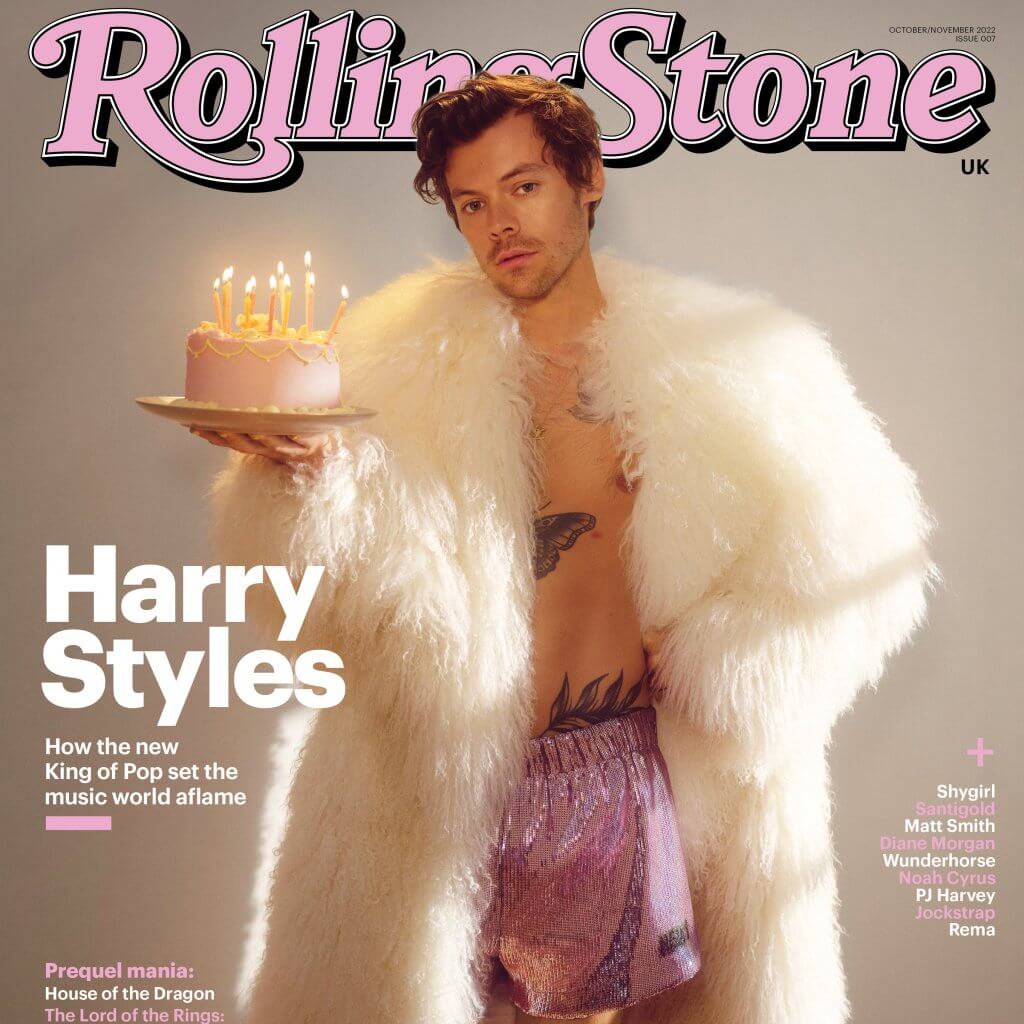This week, we were joined by Alex Hambis, Art director for Cosmopolitan magazine. Alex shared his experience in designing magazine covers for some of the biggest Editorial names in the UK.
University and graduation
Starting with studying publishing at Oxford Brookes university, Alex explained how he tailored his university course to be print/magazine leaning. Being pop culture obsessed, this allowed him the freedom to explore such topics in the way he enjoyed reading them, through magazines. After getting a taste for setting up a student magazine whilst at university, post-graduation, Alex started an online magazine, which covered culture and music. This not only allowed him to write about his interests but also gained him free entry to PR events.
A quick tour of the CV
Following his graduation from university, came the hunt for work experience. Alex gave students some valuable advice of being persistent, recommending cold emailing designers and art directors of companies that they would like experience at. Even if some emails end up bouncing back, some will go through, and opportunities could arise from just one reply. Alex hit the ground running by starting with work experience at ‘NME’, a small celebrity magazine. He then applied for a job at Closer magazine, and while he didn’t land that specific job, the company were impressed with his application and his name was passed on, securing him a design internship with a different magazine.
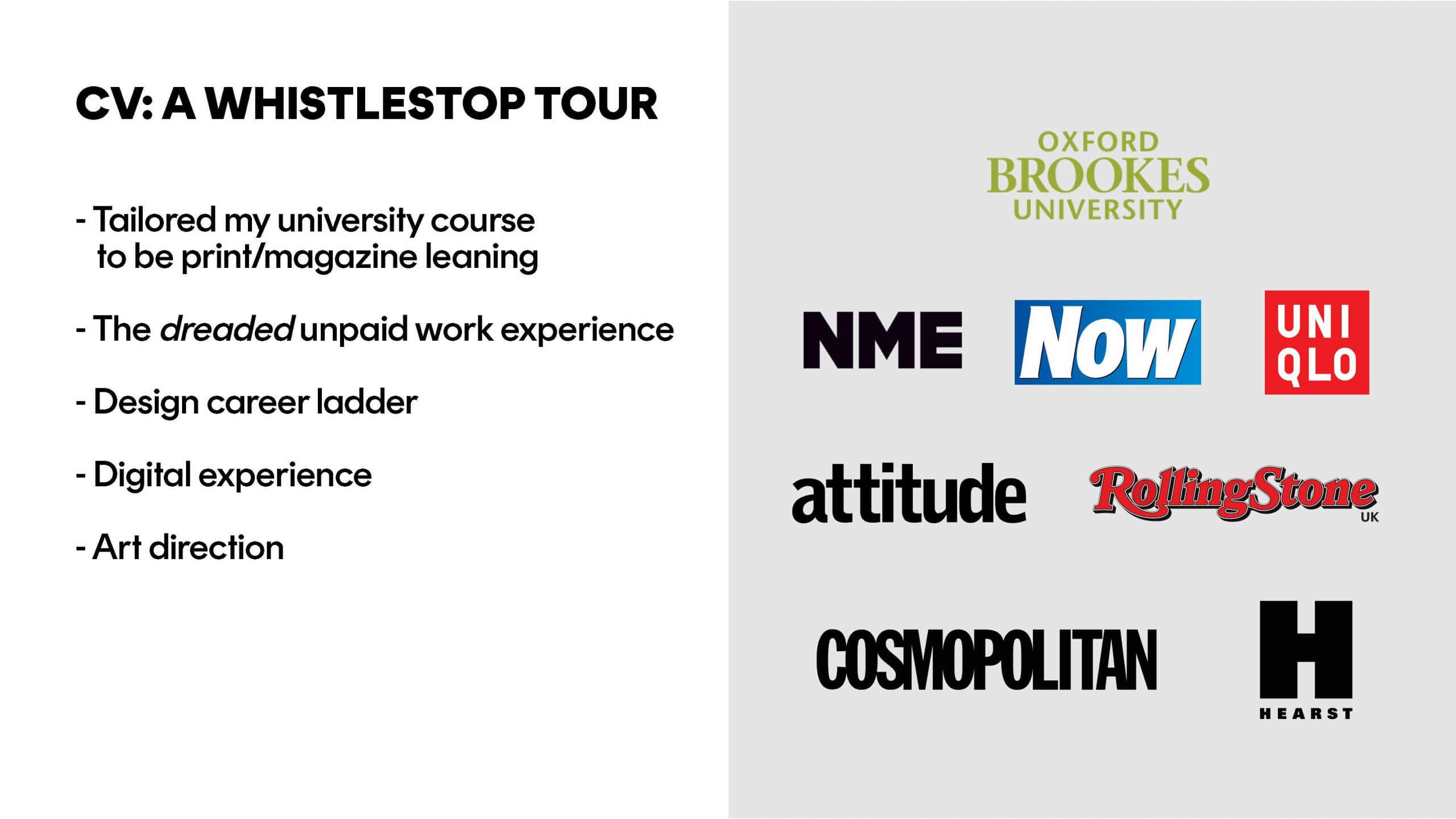
The print ladder
After completing a design internship, Alex set his sights on climbing the ladder through the stages of junior designer, mid-weight designer, senior designer, art editor, senior art director, and creative director. While climbing the ladder, Alex dabbled in other fields such as a UX role at Uniqlo, where he began to get involved with photoshoots. Ultimately, Alex missed magazine design, and returned to the world of print, applying for an art director role with little hope of achieving this (having not held this position previously). However, Alex proved himself wrong, and secured the role, propelling his career towards art direction for Attitude, Rolling Stone UK, and now Cosmopolitan.

The current magazine landscape
Alex described magazines to be among the ever-changing media landscape at the moment. Students were interested to hear that for the world of print, design is now more important and powerful than ever, with magazines acting as collectibles just as vinyls are to the world of music. Alex used the phrase ‘cover is king’ – not only do celebrities still want to appear on the front cover, but consumers still want to buy magazines featuring the faces of those they admire. Magazines are and will always be a tangible hero product that the consumer wants to physically hold in their hands.
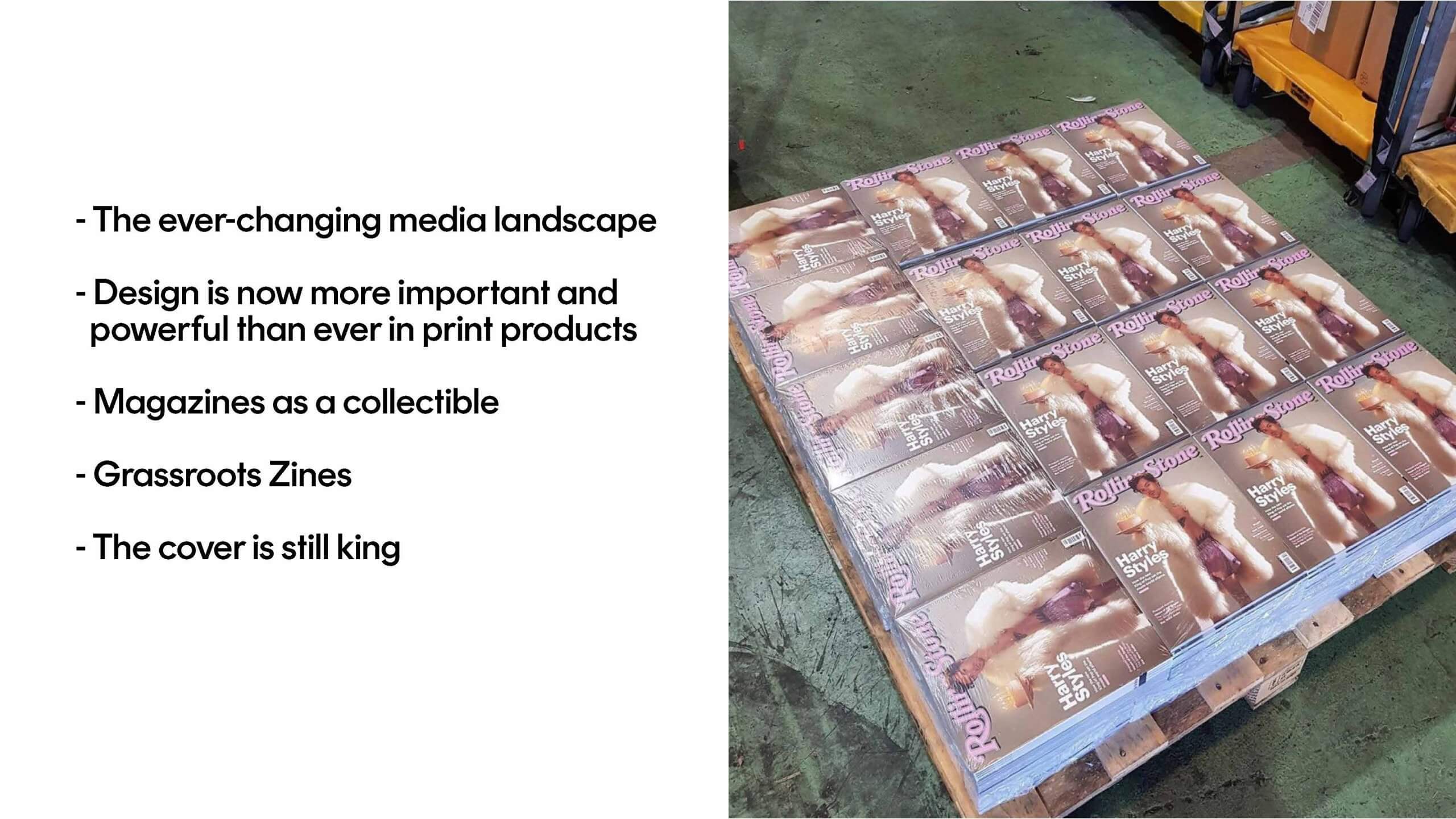
Designing the cover – what to consider?
It is important to know your audience, and Alex gave students a few key questions to consider when designing the cover:
- Where is this being sold? Online? Social media? A shop? Something they want landing on their doorstep?
- Who is it being sold to? Is this the older demographic/newer demographic? Or is this being sold to someone who directly wants it? Or someone asking another to buy it for them?
- Is it an impulse purchase? Or is this something a consumer comes back to buy weekly/monthly?
- Where in the world are you designing for? The US and UK have differences in cover image requirements and demand due to differing target audiences.
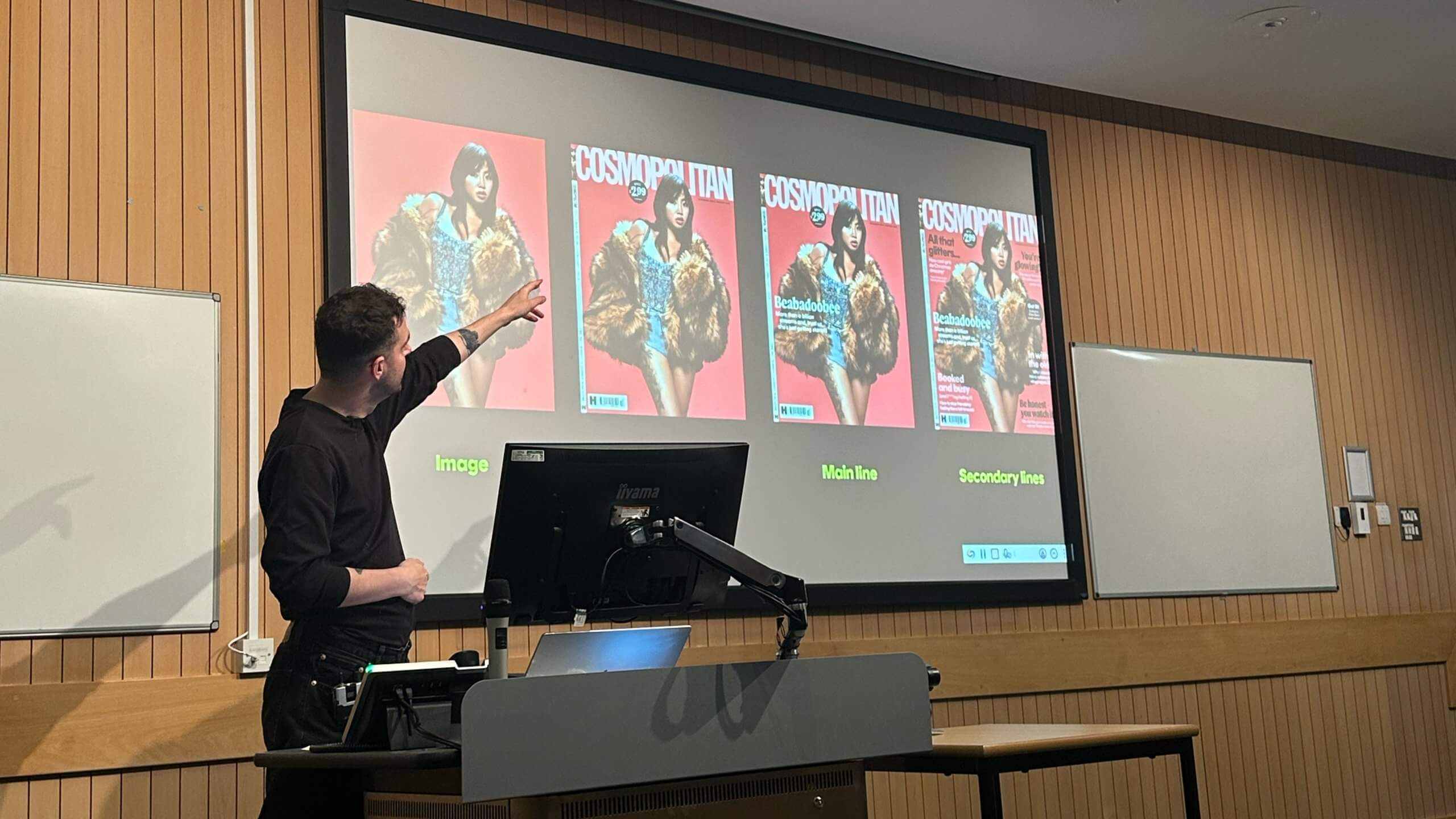
Running a cover shoot
Alex explained that design needs to be considered right from the start, even as early as shooting the covers. “The cover is always the best shot” – at Cosmopolitan, the cover shoot is run with five or six looks, before being whittled down to the top three, followed by each set of photographs being evaluated for which shot is “the best shot”. Alex advised to “Know your crop” during the photoshoot, considering the future placement of mastheads, cover lines, and required copy.
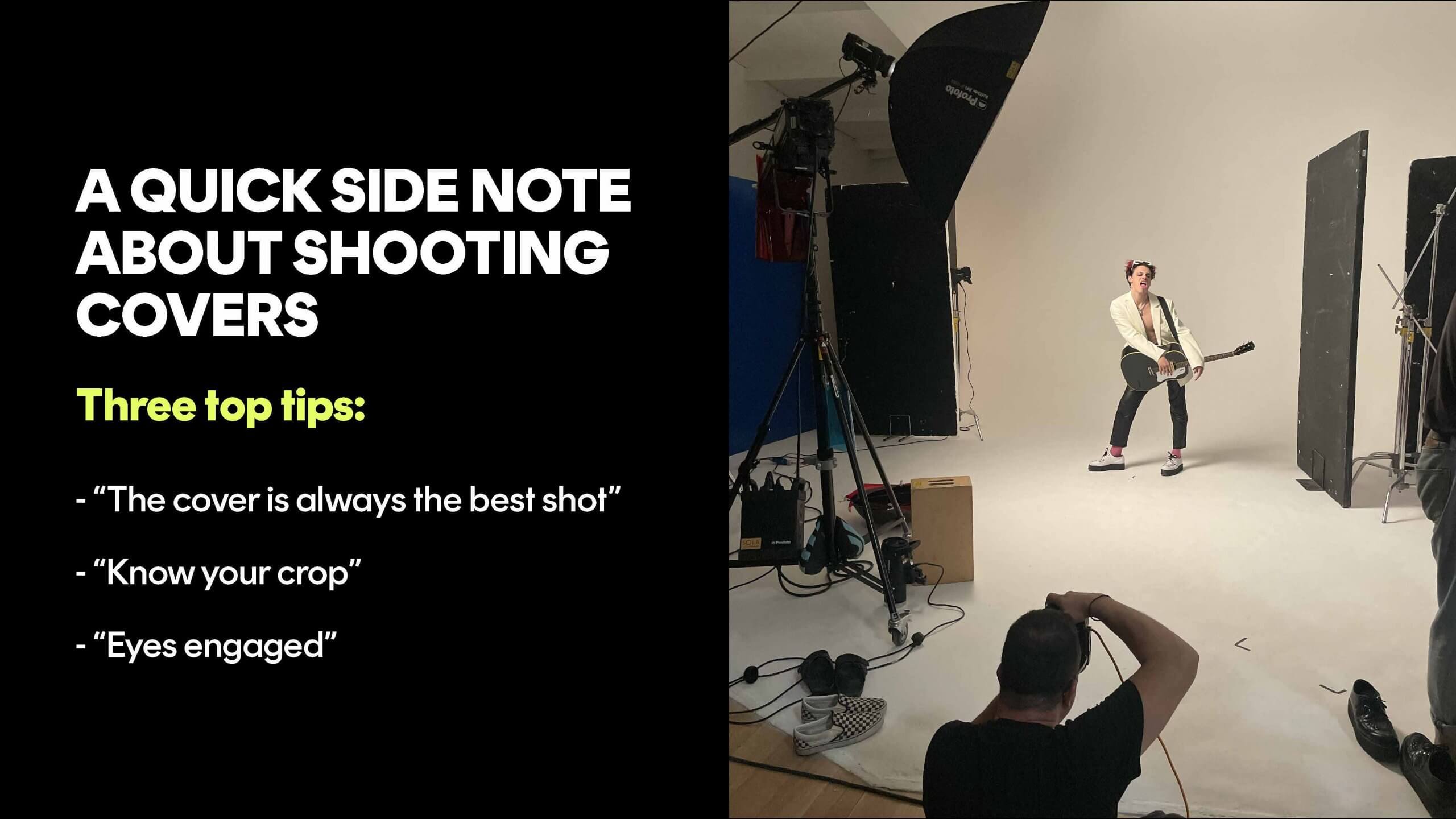
Digital vs print
Digital-only covers can be a lot more experimental due to the demand for immediate attention while scrolling. This can be seen in the cover on the left featuring a close-up of Charli XCX that makes for an “arresting crop”. In contrast, a cover featuring the same artist that has been designed for print (shown on the right), requires a very different crop due to the inclusion of cover lines, barcodes, dates, and other required elements that are not present on digital-only covers.
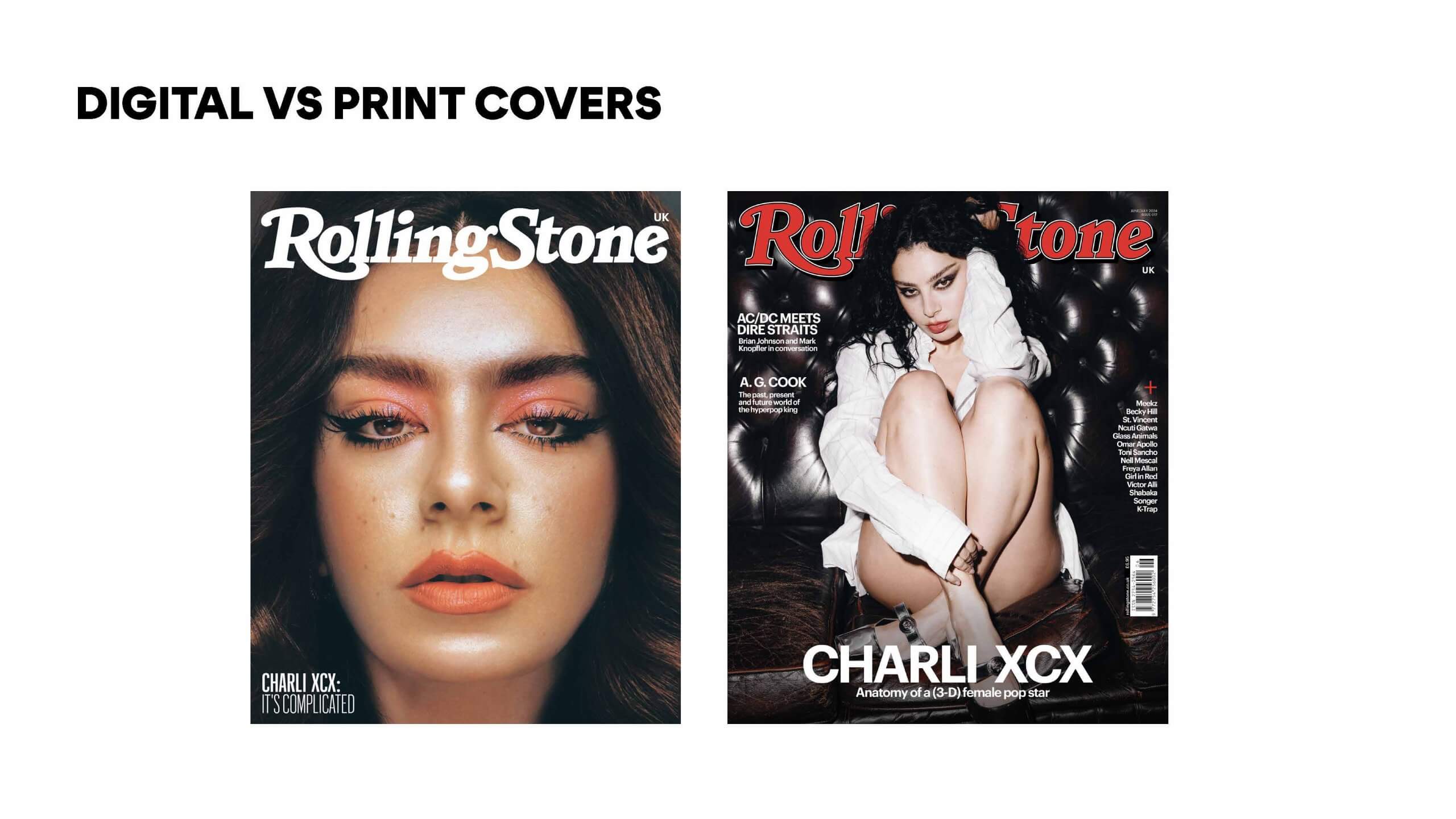
Key takeaways
- Whenever covers are believed to be ready to go, they can be placed into a fake feed on a phone to evaluate how quickly it grabs your attention while scrolling.
- Cosmopolitan suggests alternating typography between their resident serif and sans serif to add visual interest and contrast between cover lines.
- Even if you’re mainly a digital designer, print can still really help you hone your craft as it allows the eye to pick up things it wouldn’t on the screen.
- Show your point of view! Employers want to see the messy work, the fleshed-out concepts, ideas, and your problem solving.
- “The portfolio is way more than a website now”. Be discoverable on socials. 80% to 90% of photographers, illustrators, and designers that Alex seeks out are found on social media.
- “Knock on side doors, not just the front door” when looking for work experience and job roles.
Useful links
Sites to find jobs in the creative industry
Magazine inspiration
– Written by Amirah Yasin

